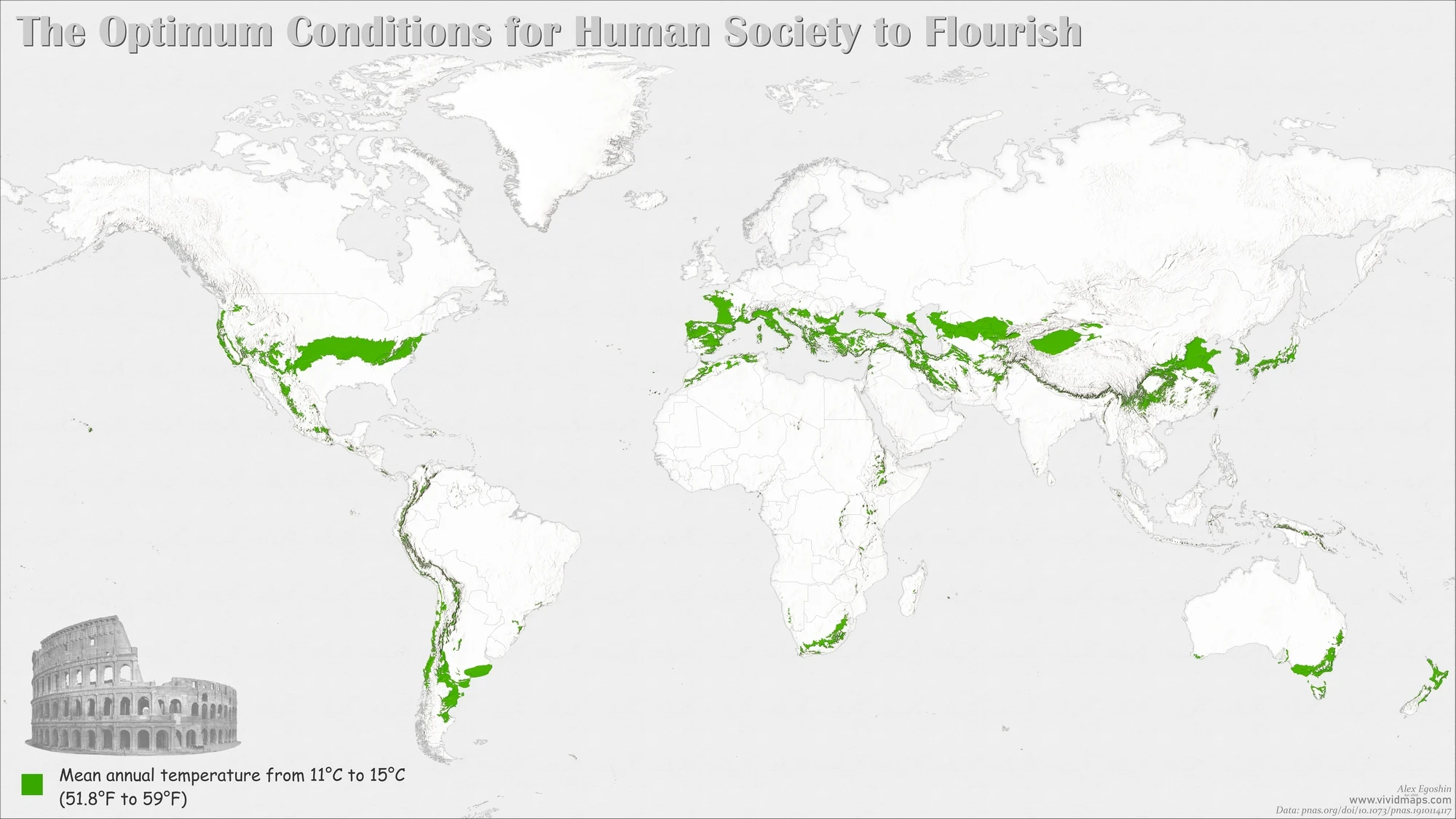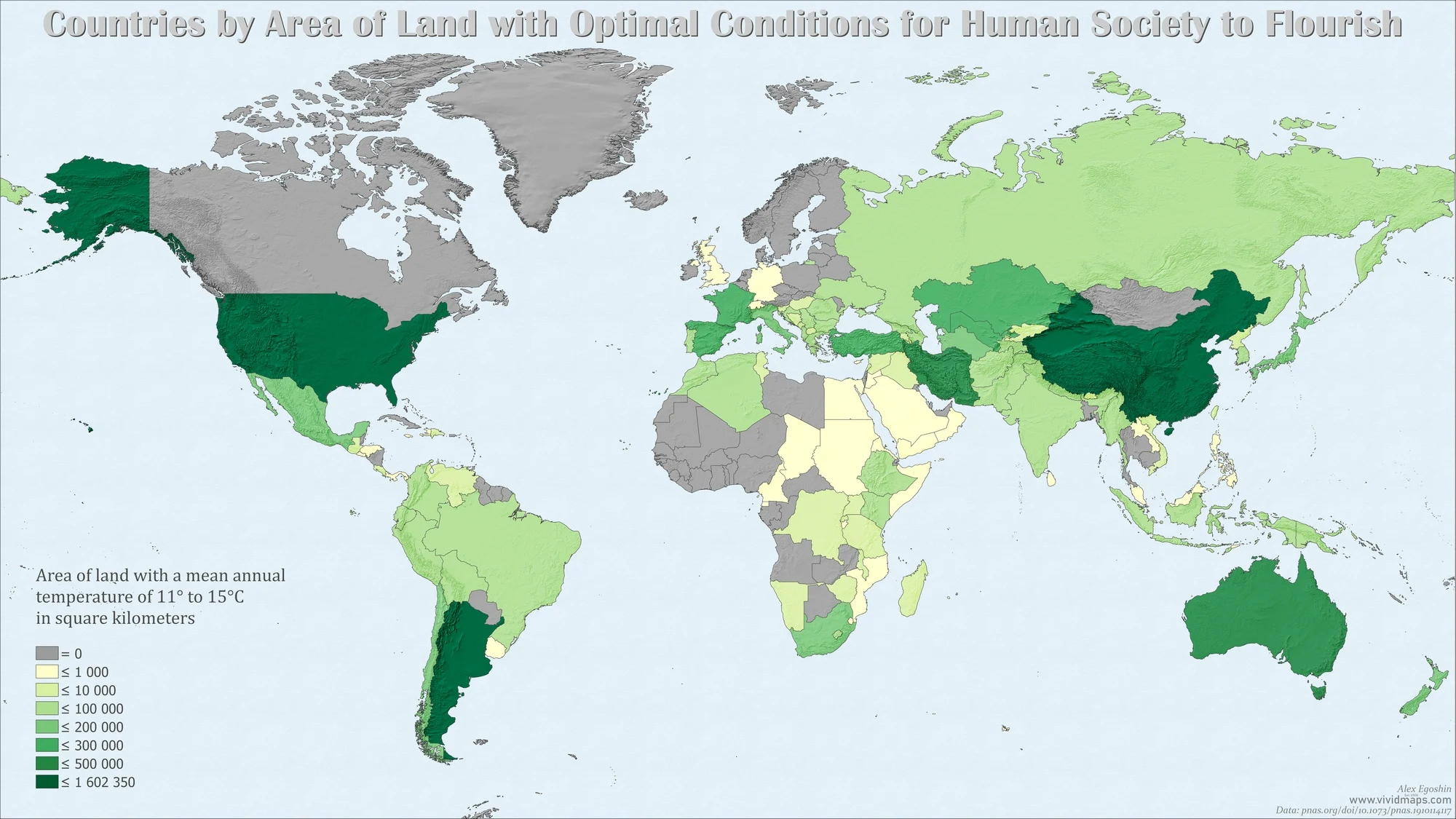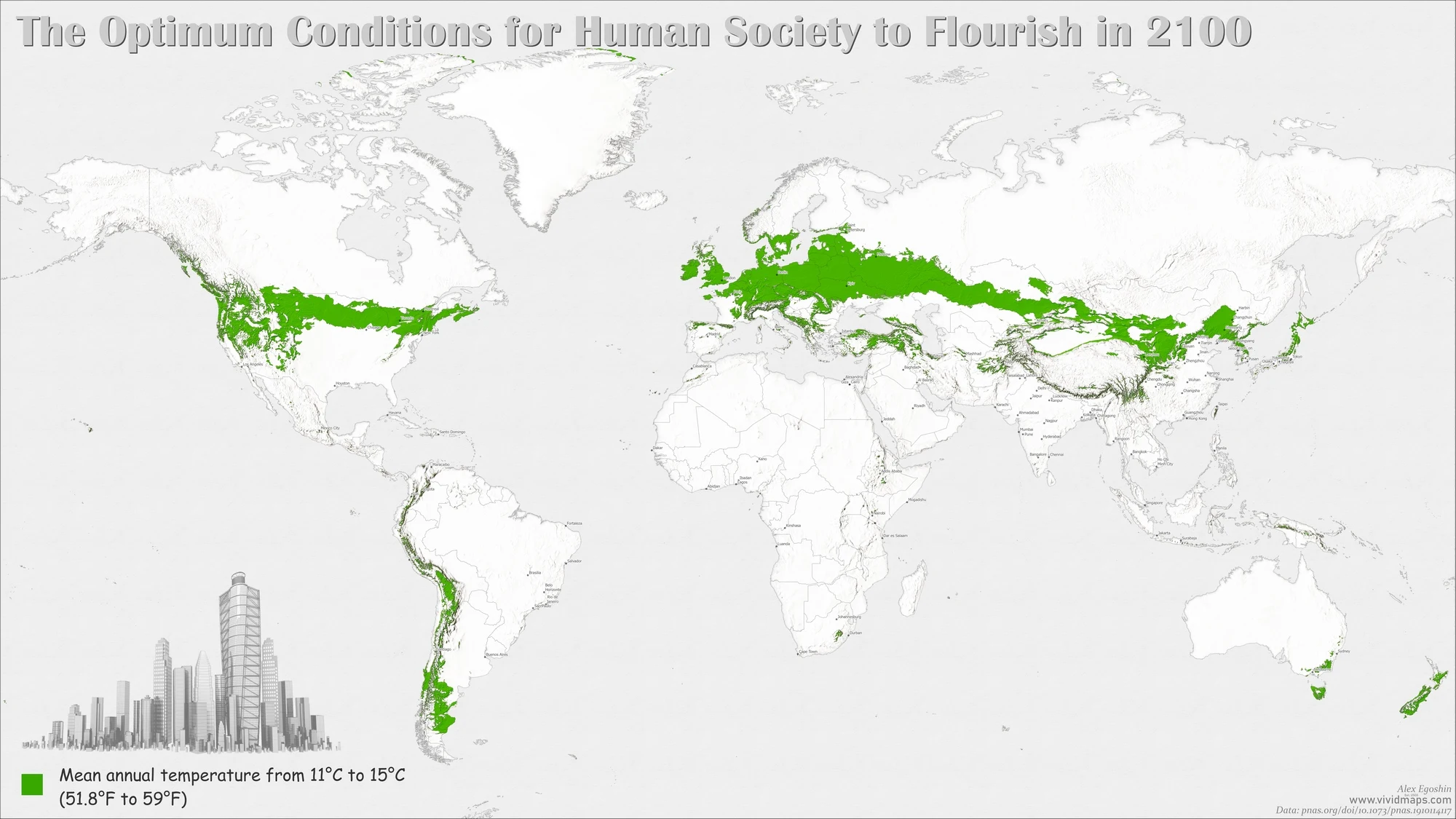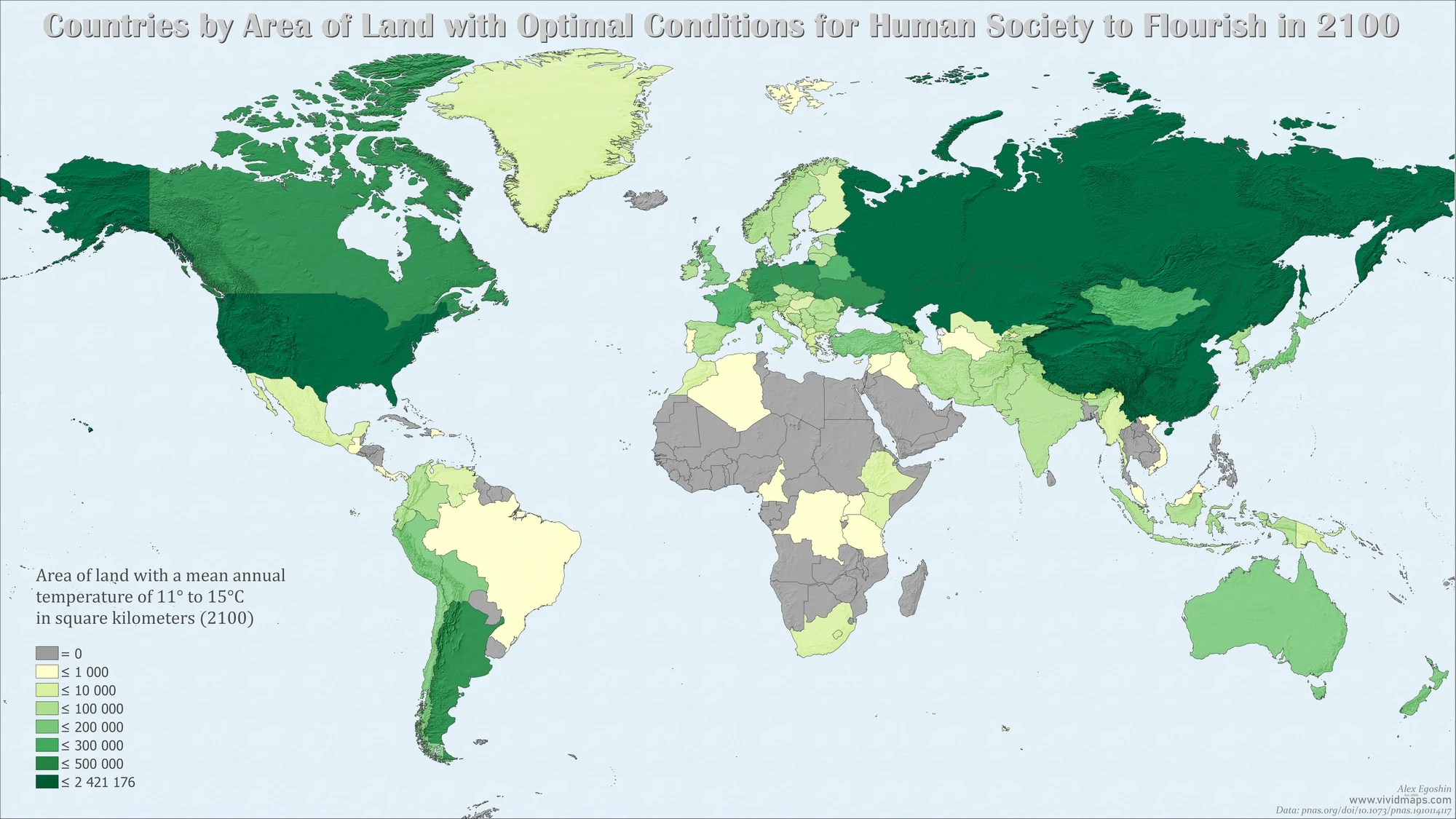Dutch research ecologist Marten Scheffer and his coworkers at the Santa Fe Institute and Wageningen University studied the history of global temperature, human population, and land-use assessments from the mid-Holocene period, starting about 6,000 years ago to the contemporary times.
Researchers found that people, crops, and livestock had concentrated heavily in a limited range of comparatively restricted climate conditions. This range referred to in the research as the "human climate niche," has remained unchanging since 6,000 years ago.
These thousands of years of human history reveal how society flourishes when we remain within it and the instability that occurs when it is moved out of these climatic zones.
According to the analysis, the optimum conditions for human civilization to flourish have a mean annual temperature of 11 to 15° C (51.8 to 59 °F). The ideal average temperature for national economic success is 13°C (55.4°F).
The modern production of crops and livestock is mainly restricted to the same climatic conditions. The exact optimum has been seen for nations' agricultural and nonagricultural economic output through analyses of year-to-year variation.
For mapping territories with mean annual temperature from 11°C to 15°C (51.8 to 59 °F), Alex Egoshin used the raster image of the bioclimatic variable of Annual Mean Temperature (BIO1). According to the map globally, the Earth’s surface area with optimal conditions for human society to flourish is about 7.7 million square kilometers or 3,0 million square miles.
According to this map, the wealthiest country in the world, the United States, has the largest area with the optimum conditions for human society to flourish. Second place in the ranking of nations with optimal climatic conditions for thriving humanity is the world’s second economy–China.
Here is the map of a land area with optimal conditions for human society to flourish per capita.
For creating this map, Alex Egoshin used future climate data from the Coupled Model Intercomparison Project Phase 6 (CMIP6) for the general circulation model MIROC6 and climate projection ssp585.
By 2100, Europe’s climate, except for the southern part, will be even more comfortable. The zone with the most comfortable climate in North America will be predominantly along the border between the US. and Canada.
Globally, the Earth’s surface area with optimal conditions for human society to flourish will grow by 32 percent from 7,738,067 to 11,390,271 square kilometers (from 2,987,684 to 4,397,808 sq mi).
By the end of the 21st century, the U.S., China, Russia, and Kazakhstan will have the most expansive territories with a comfortable climate for life and economic development.
Here is the map of a land area with optimal conditions for human society to flourish per capita and the map of countries by the number of people per sq km of land area with optimal conditions for human society to thrive by the end of the 21st century created using UN data on the projected population in 2100.
In absolute numbers, Russia, the U.S., and Kazakhstan will benefit most from climate change, while Iran, Uzbekistan, Spain, and Australia will lose the most.
According to the scientists, business-as-usual climate change scenario, the geographical position of this temperature niche is predicted to shift more over the coming fifty years than it has shifted since 6000 BP. As a result, climate change’s effect will considerably increase global income inequality and reshape the global economy by decreasing average global incomes by approximately 23 percent by 2100. Populations will not simply track the changing climate; adaptation in situ may address some challenges, and many other factors affect migration decisions.







This post may contain affiliate links. As an Amazon Associate, I earn from qualifying purchases.
Comments
Post a Comment